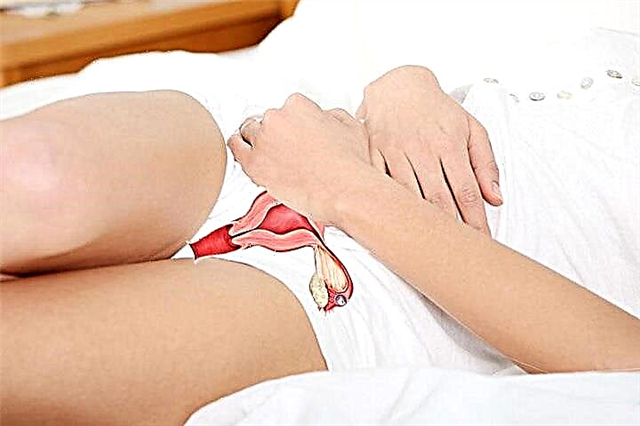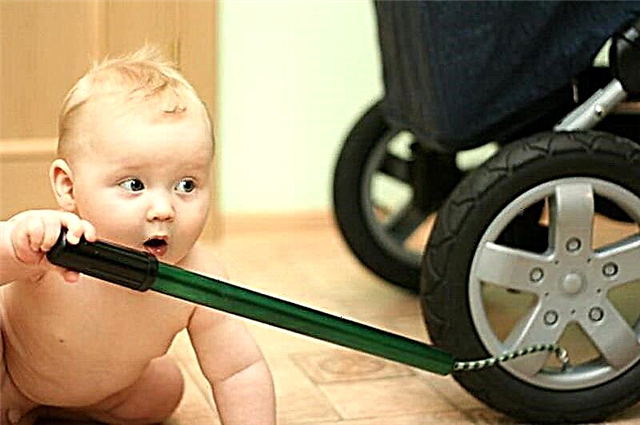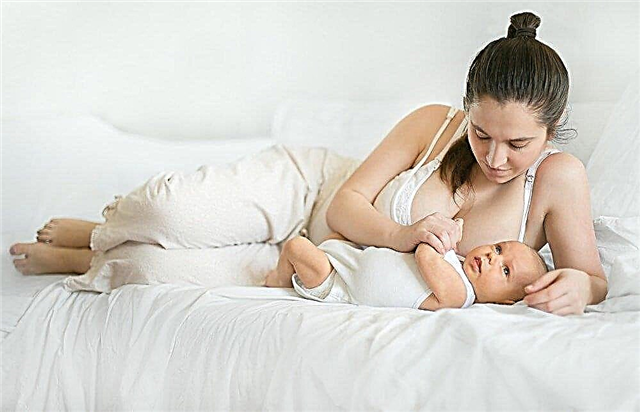High temperature, both in adults and children, is the most important symptom of a disease, usually of an infectious nature. Thus, when this symptom appears, first of all, it is necessary to find out the cause of the increased temperature. This rule also applies to those cases when there are no other signs of the disease. This article will discuss what to do if a child has a high temperature of 39, what reasons could cause it, and in what cases an ambulance should be called.

A high fever in a young child is a serious cause for concern
A significant increase in temperature in babies under one year old most often causes serious concern for parents. This is not surprising, because the child is still very young, and even a slight deterioration in his condition becomes the cause of parental experiences.
Reasons for the rise in temperature
If the baby's temperature rises to 39-39.5 degrees, then infectious pathologies, various inflammatory processes, as well as oncological diseases are most often provoking factors. So, the reasons may be as follows:
- Infectious diseases. For this category, in addition to high fever, the following symptoms are characteristic:
- Flu. At the same time, the temperature rises during the incubation period of the development of pathology. At this time, other signs have not yet appeared. On the third day (when the incubation period ends), rhinitis, cough, sore throat occur;
- Pyelonephritis is an infectious inflammatory kidney disease;
- Various children's pathologies, also of an infectious nature: measles, chickenpox, whooping cough, rubella, diphtheria. The incubation period in these cases is usually 1-2 days. After a few days, signs such as rashes, reddening of the skin on different parts of the body, coughing, etc. appear;
- Accumulation of pus in the body.
- Acute inflammatory diseases. These include:
- Pneumonia. With this pathology, the complete absence of other characteristic symptoms (for example, cough), except for high fever, is possible;
- Infective endocarditis. Most often occurs after flu or sore throat. This disease can only be treated in a hospital;
- Stomatitis;
- Pericarditis.
- Hormonal pathologies. A temperature above 39 in a child can cause hypothalamic syndrome. This is a complex of symptoms caused by a malfunction of the hypothalamus. Drug therapy in such cases is reduced to taking sedatives;
- Malignant neoplasms. The temperature can rise sharply if cancer develops. Often, this sign becomes the only signal of this pathology. A high temperature without any other symptoms can signal the presence of leukemia, lymphocytic leukemia and other blood diseases of an oncological nature.

Influenza, despite its rather mild symptoms, is a serious illness, especially for young children
Temperature 39 without symptoms
The temperature of 39 in a child always speaks of the development of one or another disease in him. This symptom very rarely manifests itself without any other accompanying signs that would indicate the presence of a cold (ARVI, flu) or other pathologies. Nevertheless, with some disorders in the body, such a state is quite possible. Even in such cases, parents often begin to panic and give the child an antipyretic as soon as possible.
A high temperature in a one-year-old child, it does not matter whether it is accompanied by other signs or not, always acts as the body's reaction to one or another stimulus. If there are no other signs, then a similar condition may be caused by an overexcited state of the baby, a feeling of severe pain, for example, during teething.
Important! Pediatricians do not advise to bring down the temperature of a child, including high (but not higher than 39 degrees), with the help of antipyretic drugs. Such actions prevent the body from independently fighting pathogenic microorganisms and producing antibodies. Thus, the normal functioning of the immune system is disrupted.
The most important condition for successful elimination of the problem is the need to identify the cause of the high temperature. This is especially difficult if the condition is not accompanied by other symptoms. The correct diagnosis can only be made by a doctor after examining a small patient.
Important! Any increase in temperature in a one-year-old baby requires the consultation of a pediatrician, especially if the parents are young and inexperienced, therefore they may lose sight of the serious processes taking place in the child's body. Lack of proper attention to the problem can cause the overflow of ordinary ARVI, which passes without symptoms, into pyelonephritis or another dangerous disease.
If the temperature does not drop for a long time
If the temperature of 39 degrees in a child does not decrease for several days, then such a condition may indicate the development of complications. For example, the flu can turn into otitis media or pneumonia. A high temperature can persist for a long time for reasons such as incorrect diagnosis (accordingly, ineffective treatment) or the use of an incorrectly selected antibiotic.
In this situation, you should immediately contact your pediatrician. If the child is still very young, then there is a serious risk to his life and health, in which case it is necessary to call an ambulance.
Do I need to bring down the heat
The need to reduce fever in a child is determined by the following factors:
- Baby's age;
- The general condition of the crumb.
It is believed that the temperature below or equal to 38.5 degrees should not go astray. If the thermometer reaches 39 degrees or exceeds this level, then the temperature must be brought down.
It is necessary to take into account the age of the baby - the younger he is, the more seriously his condition should be taken in this case. In addition, it is important to take into account the individual characteristics of the child: for example, some children may feel good enough even at high temperatures, while others, even at 37.5 degrees, feel severe discomfort. In the first case, it is permissible to postpone taking antipyretics (if the age is not too young), in the second, you can give the medicine earlier.
On a note. If the previously high temperature was accompanied by seizures, or the child has a disease of the central nervous system, antipyretic drugs should be used already at 38 degrees.
When an urgent medical examination is needed
Regardless of the thermometer indicators, you need to immediately seek medical help in the following cases:
- The baby's age does not exceed 2 months;
- There is reason to believe that the patient is dehydrated. Signs of dehydration are:
- pronounced drowsiness;
- strong excitement;
- the mucous surfaces in the mouth become dry;
- rare urination;
- "sunken eyes";
- "Sunken" fontanelle of babies.
- The fever is accompanied by convulsions;
- A rash appeared on the child's body (most often on the arms, cheeks);
- Slow or labored breathing;
- The baby has a bad headache;
- Persistent vomiting;
- It is impossible to lower the temperature with medication;
- There is a possibility of dehydration (loose stools, the child refuses to drink, frequent vomiting);
- If the patient's condition worsened even after the doctor's examination, or new symptoms appeared.
Important! If at least one of the listed signs is observed at a temperature of 38-39 degrees, you should immediately consult a doctor.

If the child's temperature rises significantly, it is necessary to call a doctor at home
Parents' actions before the arrival of the doctor
Before the arrival of a specialist, parents should take the following actions:
- Try to bring the temperature down first. You need to undress the baby (if the baby is very small, also remove the diaper). Provide fresh, cool indoor air without drafts. Wipe the patient with a cloth soaked in warm water, apply a wet sponge to the sites of localization of large vessels (this includes the armpits, neck, groin area). Provide a calm environment, put the patient to bed. If the baby began to tremble, it means that he has a chill. In this case, it should be covered with a warm blanket and given hot tea. However, it is impossible to keep the child wrapped up for a long time, otherwise his body may overheat;
- Prevent dehydration of the patient's body. It is necessary to give the child as much water as possible (preferably boiled) and other liquids (juices, fruit drinks). The absence of dehydration is evidenced by regular emptying of the bladder every 4 hours (while the urine should be light);
- Closely monitor the condition of the child. It is important not to allow a strong rise in temperature (more than 38.5-39 degrees). It is also necessary to monitor the condition of the child's skin (whether there is a rash on it).

During a fever, the child needs plenty of fluids.
If there was a sharp decrease in high temperature (by 2 divisions in 1 hour), then you need to do the following:
- Warm the child (give hot tea, put a heating pad at the feet);
- Change the patient's clothes if he is sweating;
- Re-spread the laundry (if necessary).
At high temperatures, do not perform the following actions:
- Make warming compresses;
- Wrap the child (during the fever, the baby will start to sweat, the sweat should evaporate from the surface of the body, taking with it excess heat);
- Make alcohol lotions;
- Wipe the child with vinegar, apply cold heating pads;
- Give medicines that can make you feel unwell, such as allergies.
Home first aid
If a child's temperature rises to 39 degrees, the first thing that can be done at home is:
- Give the baby an antipyretic agent. In this case, in no case should aspirin be used, since with a viral infection in children under 12 years of age, this remedy can provoke a serious complication - Reye's syndrome;
- Call a doctor at home. Before his arrival, note the symptoms that accompany the fever (cough, diarrhea, sore throat, runny nose, rash), or their absence.
- Give your child more water.
- Wipe the patient with a wet cloth, moisten the groin area, armpits, forehead, neck.
Important! If the baby has convulsions, you need to urgently call an ambulance. Before the arrival of the doctor, the patient should be given an antipyretic agent.
Caring for a baby with a high temperature is carried out as follows:
- Feed your baby only food that is easily digestible. Exclude from the menu meat products, canned food, sweets, fatty foods;
- Continue to give the patient plenty of fluids (in addition to boiled water, juice and fruit drinks, you can give warm tea with lemon, compotes, mineral water, herbal teas);
- Systematically ventilate the room, try to humidify the air. The temperature in the room should not rise above 20-21 degrees;
- Do not over-wrap your baby. The patient can be covered with a light blanket or diaper.
Important! At a temperature of 39, the child is at increased risk of seizures and other serious complications. Therefore, a strong fever in a baby is a reason to urgently call a doctor at home. If the temperature rises to 39.1 and above, you need to call an ambulance.
Antipyretic drugs
To bring down the temperature in a child of 39 degrees will help such means as children's paracetamol (sold in the form of tablets, syrup and rectal suppositories), ibuprofen (available in the form of tablets, suppositories, capsules, suspensions). Medicines should be used in accordance with the instructions that come with the product.
Council. When using syrups and suspensions, be sure to use the measuring spoons attached to the medicine. If you replace them with ordinary teaspoons, then the likelihood of the child receiving the amount of the drug he needs will decrease.
Also, one should not forget about folk remedies, which include various herbal infusions, bee honey, cranberries, raspberries, poplar buds infusion, and so on.

What every parent needs to know about antipyretics
Knowing how to behave when a child's temperature rises to 39 degrees will help parents avoid serious mistakes in treating a baby and will allow them to feel more confident in such a serious situation.



